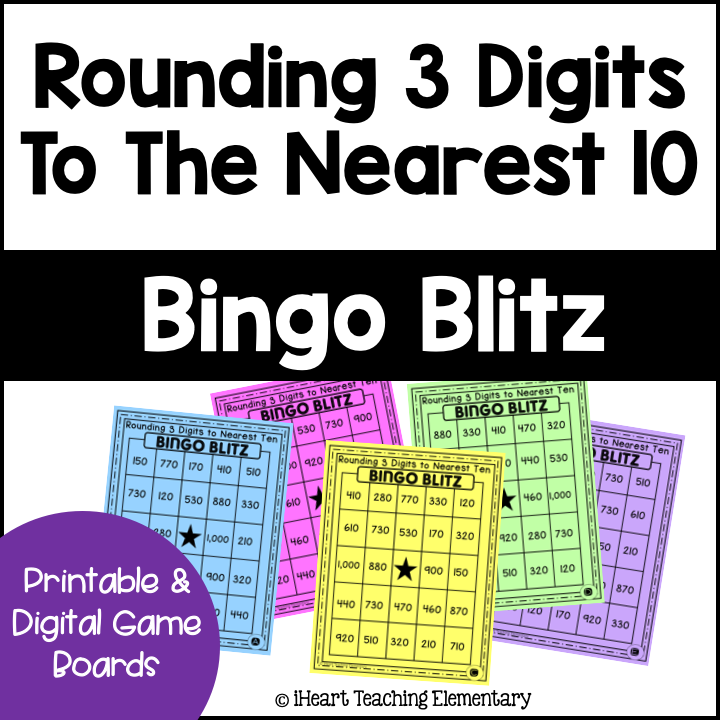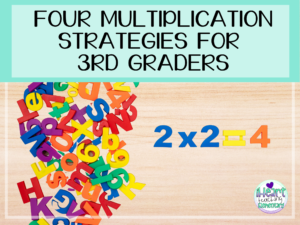Rounding can be difficult for students to grasp if they don’t understand place value. After understanding how place value works with rounding, you can teach other strategies to help students.
In this post, I’m sharing how to teach rounding in 3 engaging ways.
Place Value Line
Before students round, they have to have a good foundation in place value.
Using a number line helps kids understand how numbers round. To round to the nearest ten, you want to help kids understand that numbers round to ten it is closest to. (They don’t round up or down. That confuses kids.)
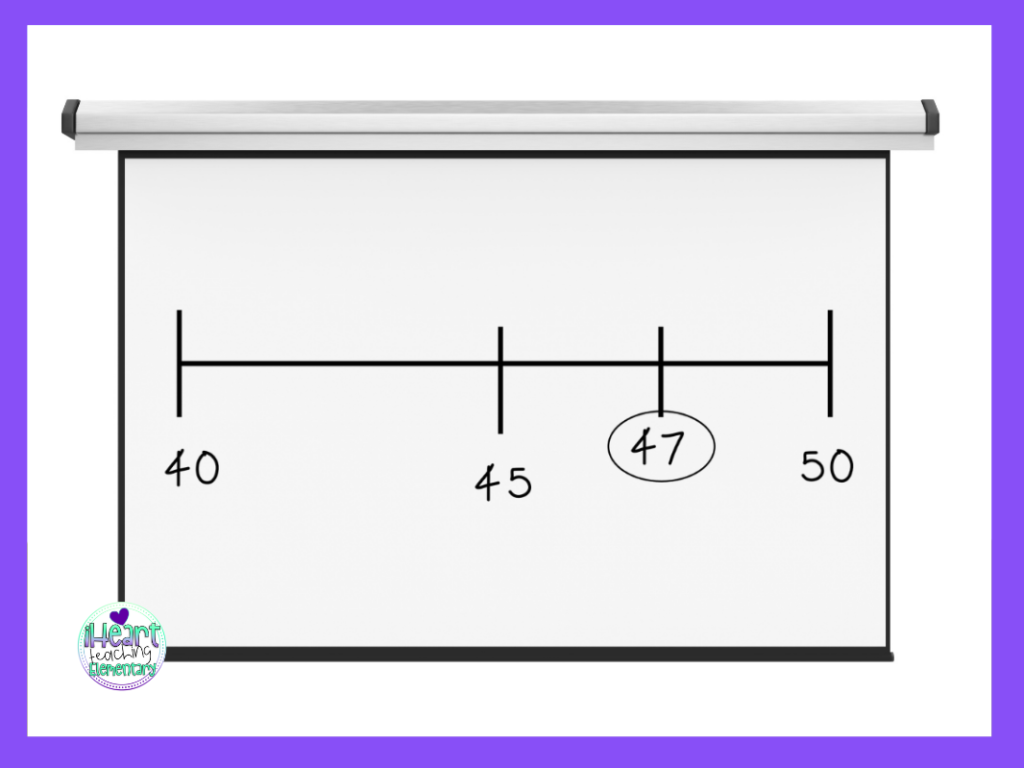
To show students this, use an example like this: to round 47 to the nearest ten, write a number line on the board or screen.
Show students that there are 4 tens so that means 40 will be the first number on the number line. Ask kids what the next ten is. They should respond with 50.
Next have students find the middle number between 40 and 50. They will quickly learn that the middle number in between tens always ends with a 5. So the middle number for this example is 45.
Now that we have the number line all set up for this example, ask for a volunteer to find where the number 47 goes on the number line and have them write it on the board.
The rest of the students can do this same problem on a dry erase board or even on their desk! (Dry-erase marker easily wipes off most desk surfaces.)
Writing on desks will bring up the engagement level 100%. The kids love it and they’ll beg to do more math on their desks in the future. You’ve been warned.
Do these same steps and ask different students to come up and fill in the number line.
As students fill in their number lines at their desks, you have time to monitor and help struggling students.
Mr. Demaio Rounding Video
After teaching kids the number line and how place value works when rounding, you can move on to a strategy like Mr. Demaio shares in his Youtube video.

This is the BEST video I’ve used when teaching rounding because it’s hysterical and the kids LOVE it.
The strategy rules are very catchy and kids still need to use place value to use the strategy. So you’re reinforcing the importance of place value once again.
As we go through the video, the kids try it out at their seats either in their notebooks or on dry-erase boards.
A tip for this video is to play only the first half when teaching rounding to the nearest 10 and then come back and play the second half when teaching rounding to the nearest 100.
Play a Bingo Game
After teaching place value and practicing the strategy from Mr. Demaio’s video, you can play a game to continue practicing the skill.
When we get to this step, I allow kids to choose the strategy they want to use.
Some kids find using the number line easier and some kids like using Mr. Demaio’s strategy. Allowing them to choose the strategy will help your students be successful.
In the end, you want kids to get the correct answer no matter how they got there.
A game I like to play to practice rounding skills is Bingo Blitz! It’s played just like the regular bingo game except it has a FUN twist.
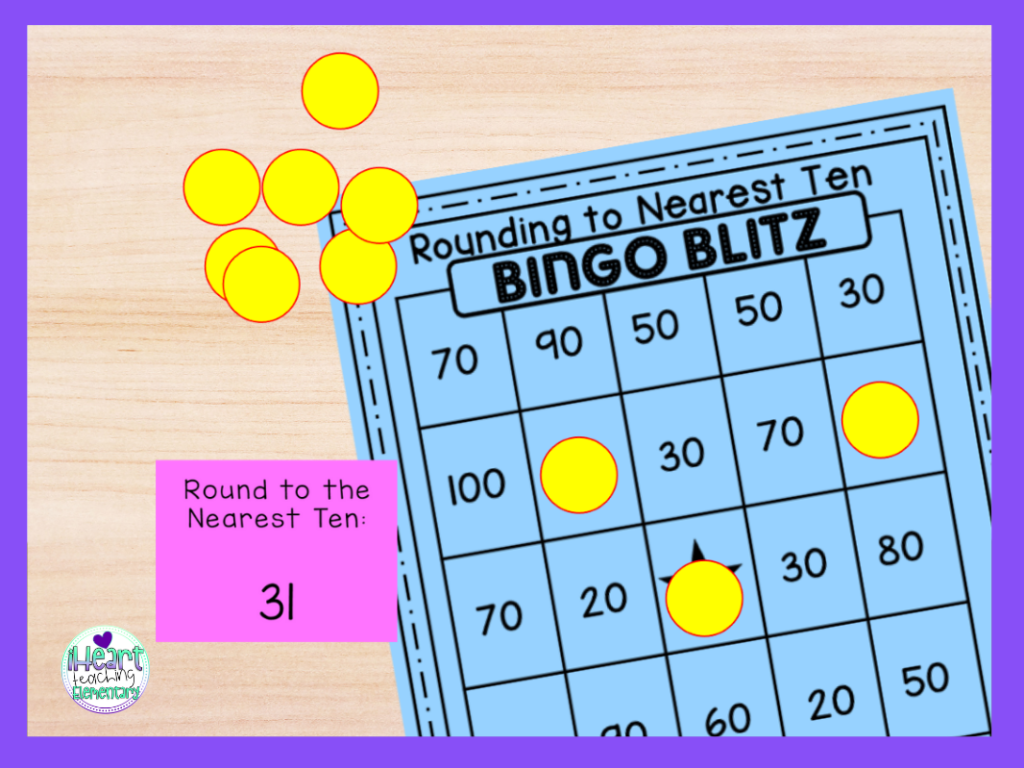
Kids get in teams and receive a bingo board. One player turns over a card with a rounding problem on it.
Everyone in the group rounds the number so that all students are engaged. When everyone is finished, answers are revealed and if a player has the correct answer, they get to put a counter on the answer on their board.
But here’s the fun twist- If a player turns over a card that says Bingo Blitz, they have to follow the directions on the card. And that might mean taking 1 or even 2 counters off their board!
The kids go crazy over that part of the game.
The player to get 5 in a row first, wins! It’s such a fun way to practice rounding.
You can use these 3 ways to teach rounding to the nearest ten, rounding to the nearest hundred, and rounding to the nearest ten with a 3 digit number.
🛍 Shop This Post
Save This Post for Later
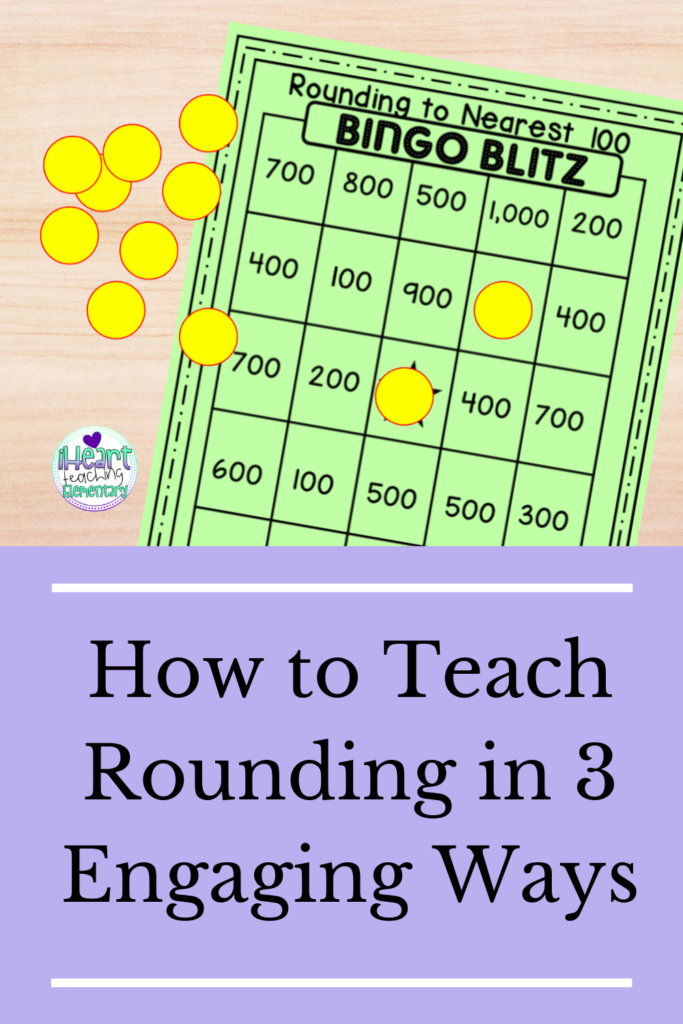
Hope you found some ideas for teaching rounding that will keep your students engaged!

